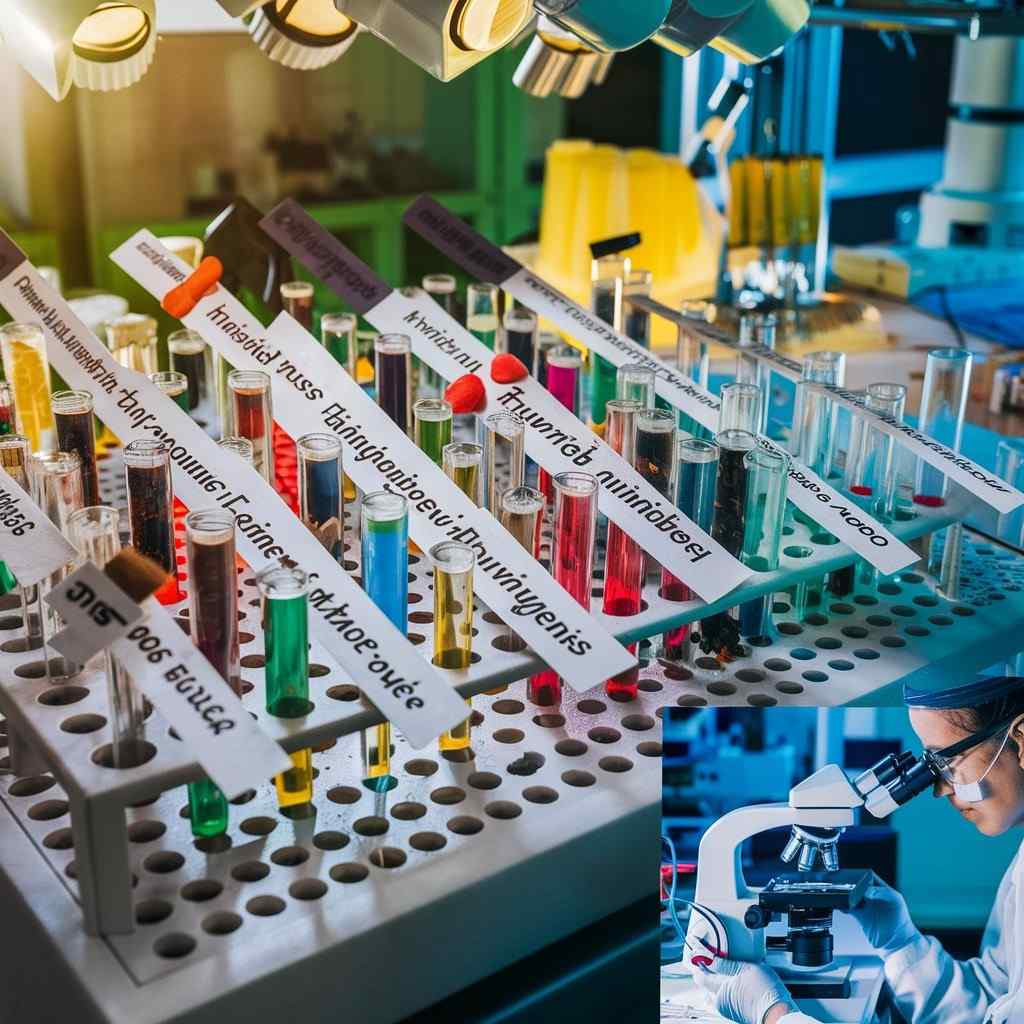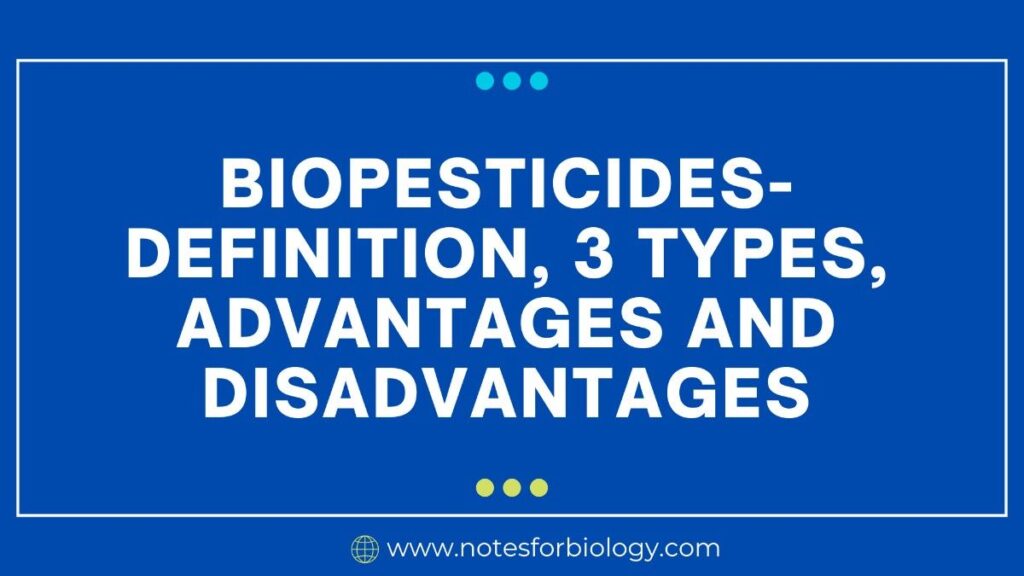Natural or naturally generated insecticides are known as biopesticides and are used to control agricultural pests. which are an environmentally beneficial substitute for synthetic pesticides, are derived from microbes, plants, and certain minerals. They are extremely particular to the pests they target, causing the least amount of harm to the environment and non-target creatures through processes including competition, predation, and parasitism. Because of their benefits—such as less toxicity, less of an adverse effect on the environment, and compatibility with organic farming—they are essential to integrated pest management (IPM) and sustainable agriculture.
Table of Contents
Definition of Biopesticides
A class of pesticide known as biopesticides is made from naturally occurring substances including bacteria, plants, animals, and minerals. For the most part, they are less harmful to humans and the environment than traditional synthetic pesticides. Through a variety of strategies, such as competition, predation, parasitism, or inducing an unfavorable reaction in the pest, they are employed to manage pest populations.

Types of Biopesticides
1. Microbial Biopesticides
These goods have microorganisms as the active component, such as bacteria, fungus, viruses, or protozoa. These microbes are directed against particular pests.
As an illustration, Bacillus thuringiensis (Bt) is a common microbiopesticide. Bt generates proteins that, when consumed by some insects, are poisonous.
Mechanism: By competing with other hazardous microbes or infecting and killing the pest, the microorganism lowers the number of pests.
2. Biochemical Biopesticides
These are organic compounds that use non-toxic methods to keep pests under control. Pheromones, hormones, and plant extracts are a few examples of them.
For instance, neem oil, which is made from the tree’s seeds, has growth-regulating and insect-repelling properties.
Mechanism: They might repel pests, stop them from mating, or stop the growth and development of pest larvae.
3. Plant-Incorporated Protectants (PIPs)
These are compounds with insecticidal properties that are produced by plants using genetic material that has been incorporated into the plant. After that, the plant develops a pest-resistant exterior.
As an illustration, consider Bt corn, which has undergone genetic modification to create Bt toxin, a chemical toxic to particular insect pests.
Mechanism: The pesticide chemical is produced internally by the plant and targets and kills bugs that feed on the plant.
Advantages of Biopesticides
1. Environmental Safety
- Low Residue: Because it usually leave little to no residue on crops, there is less chance of contamination and damage to creatures that are not intended targets.
- Biodegradability: Compared to synthetic pesticides, they degrade in the environment more quickly, resulting in less environmental persistence and a lower chance of soil and water pollution.
2. Target Specificity
- Selective Action: Since They are usually quite specific to the pest they are targeting, their effects on humans, wildlife, and beneficial insects are minimized.
- Reduced Resistance: Because biopesticides have more complicated mechanisms of action than synthetic poisons, pests are less likely to become resistant to them.
3. Health Benefits
- Non-Toxicity: Compared to chemical pesticides, They are usually less harmful to people and animals, lowering the possibility of poisoning and long-term health problems.
- Food Safety: Biopesticide-treated crops have lower residual levels, making them safer to eat and contributing to healthier food sources.
4. Sustainable Agriculture
- Integrated Pest Management (IPM): By incorporating biopesticides into IPM programs, several environmentally and economically viable control options may be used.
- Soil Health: They contribute to long-term agricultural production by lowering the chemical load in agriculture and preserving soil biodiversity and health.
5. Regulatory and Market Acceptance
- Regulation: Compared to synthetic pesticides, biopesticides frequently have less onerous regulatory requirements, which allows for faster market entry.
- Organic Farming: They are generally acknowledged as organic farming methods, meeting customer demand for food that is produced responsibly and organically.
Disadvantages of Biopesticides
1. Limited Spectrum of Activity
Specificity: Target specificity can be a benefit as well as a drawback. Because it have frequently target a limited spectrum of pests, controlling several pest kinds in the same area may need the use of numerous treatments.
2. Variable Efficacy
- Environmental Sensitivity: Factors like temperature, humidity, and sunshine can have an impact on how effective they are. Microbial biopesticides, for example, may be less effective in very hot or dry environments.
- Consistency: Compared to synthetic pesticides, the performance of biopesticides is less predictable due to their potential for varied effects in various situations or seasons.
3. Slower Action
Effects Are Delayed: In comparison to conventional pesticides, they often take longer to have an impact on insect populations. When emergency pest treatment is needed, this delayed approach may be detrimental.
4. Short Shelf Life
Storage Stability: A lot of biopesticides have a limited shelf life and need particular storage circumstances in order to work. This may result in storage and delivery logistical issues.
5. Higher Costs
- Production Costs: Compared to traditional pesticides, it may be more costly to produce and formulate. Some farmers may find them less appealing as a result of these increased expenses if they are passed down to consumers.
- Application Costs: The cost of pest treatment may increase if specialized application techniques and tools are needed.
Frequently Asked Question
1. What are biopesticides with an example?
As an illustration, some fungi may suppress certain plants, while other fungi may suppress specific insects. Bacillus thuringiensis is the most popular microbial biopesticide available. Natural Substances: These consist of plant-based elements such as black pepper, garlic oil, and maize gluten.
2. What is the importance of biopesticides?
One of the key benefits of using biopesticides into a sustainable agricultural system is that they are more ecologically friendly and do not damage the soil, water supply, animals, or beneficial insects.
3. What are the three major classes of biopesticides?
The three primary categories of biopesticides are: plant-incorporated protectants, microbials, and biochemicals.
4. What is the process of biopesticides?
The following raw components are used to create the biopesticide, partially based on weight: 24–25 portions of eggplant, onion, and fistular onion stalk juice; 14–15 portions of pepper and chili juice; 6-7 portions of alcohol-extracted pine tree leaf; 11–12 portions of plant ash leaching liquid; 4-5 portions of potassium sulfate;…
Related Article

